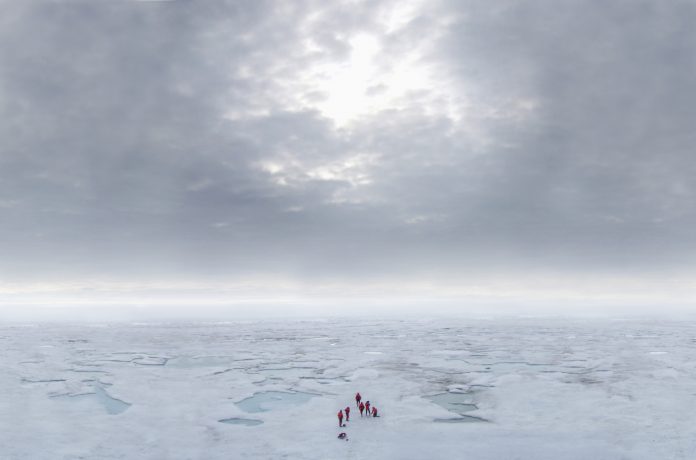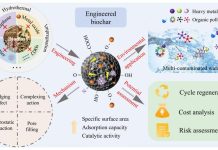Carole Plessy, Head of OneWeb’s Maritime Product Development, details here the role of connectivity when it comes to the sustainable development in the Arctic’s seas
Connectivity will play an important supporting role for the UN’s sustainable development goals. The Arctic is one of the regions where the themes of many of these goals are felt most intensely, as climate action, responsible industry and improving community well-being are all key development areas for the region.
The maritime sector has a particular stake in supporting the Sustainable Development Goals in the Arctic, as the industry wrestles with the push-and-pull of thinning ice enabling more effective trade and transport while needing to ensure that traffic does not damage the delicate climate.
Effective connectivity is the key, particularly by satellite, as the region is under-served by either terrestrial or current geostationary satellite services. It is about empowering authorities and industry to cooperate and establish regulations that balance bringing in new business with environmental protection.
SDG 3: Good Health and Well-being
Maritime workers are frequently away from home for extended periods of time. There has been much recent research on the impact of isolation on mental health, and it is generally accepted that the ability to communicate with family and friends is vital.
A crew’s physical health can also benefit massively; real-time, high-throughput connectivity will allow for applications ranging from personal training to doctors on video conference, rather than having to fly from place to place or for the crew needing to wait to dock before receiving advice.
SDG 9: Industry, Innovation and Infrastructure
Increased connectivity will allow for more economic activity in previously unconnected areas. For ships at sea, connectivity will support increasing on-board digitalisation, to match the advances made in shorebased logistics networks. A digitalised maritime industry is also likely to be more inclusive and attract more young people, supporting a thriving industry and providing jobs to a diverse demographic.
More widespread industrial automation has extensive potential maritime applications. Letting drones scout out potentially unsafe areas, for example, supports expansion into new regions while prioritising the safety of maritime workers, and remotely-operated or autonomous vessels can even take on entire unmanned journeys, freeing up crew time and expertise for tasks that require human intervention.
On land, too, current connectivity that is serviceable for day-to-day activity can quickly reach capacity in tourism hotspots serviced by cruise liners. Many Arctic communities rely on tourism for income, and in today’s always-on culture, adequate connectivity could be an important qualifying factor for areas to be on the tourist trail.
SDG 12: Responsible Consumption and Production
Improved satellite connectivity allows for maritime businesses to expand into new areas, responsibly. Satellite monitoring of such regions will prevent oil spills from going unchecked, like the 2006 Alaskan disaster.
In terms of ecological protection, local communities can increase their awareness of, to give one example, the amount of legal and illegal fishing that is taking place, and the rate at which it is increasing, informing the adaptation and enforcement of policy.
Moreover, making shipping truly sustainable development means looking at the whole picture, and with connectivity supporting efficiency, automation and oversight, that can become a reality. This is where we can learn from challenges in other industries, such as the difficulties electric cars have had with the recyclability of their constituent parts and batteries. Ubiquitous connectivity is the only way of ensuring that every part of the maritime supply chain abides by high environmental standards.
SDG 13: Climate Action
Connectivity will allow for better emissions monitoring of maritime activity, both by the vessels themselves and by authorities. Independent monitoring will hold companies accountable and ensure faster uptake of new policies. It will also enable policies to be adapted more intelligently, informed by the observed behaviour of those at sea.
Companies, meanwhile, can use internal monitoring to safeguard against fines or penalties. Improved communication channels will also help lower costs, by minimising fuel consumption and streamlining shipping routes.
Additionally, effective prevention requires accurate prediction. Gathering and processing climate data from sensors is the first and foremost step when analysing the health of an ecosystem, preparing for inclement weather or even natural disasters. Forecasting data needs to reach those who it will affect in real-time so that adequate preparations can be made. Harsh environments like the Arctic means fast communication and data sharing is paramount for ensuring the safety of those who work there.
Completing the Arctic Circle
In short, the Arctic maritime sector is potentially facing a new era of opportunity, with the chance to use it responsibly. Harnessing connectivity will give the industry a chance to work within the Sustainable Development Goals and holistically include the targets into everyday operations, benefitting both the business and our climate.
These insights arose from a roundtable entitled ‘Completing the Arctic Circle’, which was made up of eminent Arctic, policy and industry experts, held on the 6th of November 2019 in London and hosted by OneWeb. OneWeb’s low-latency, high-throughput connectivity service will go live in the Arctic in 2020.











